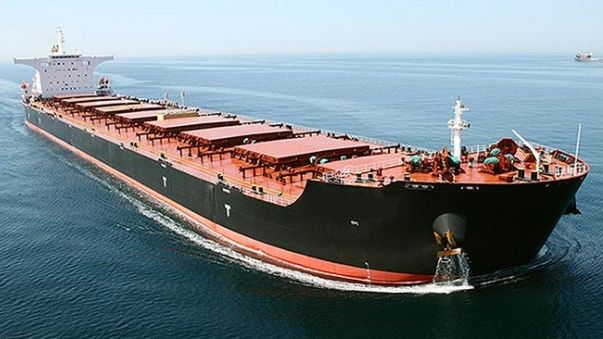The Banking System's "Safety Trap"

Times for most shipping sectors are very tough, by many standards, even if one takes a long-term historical perspective. The Baltic Dry Index is up almost 100 percent in the last forty days – and still, dry bulk vessels are barely achieving break-even rates on the spot market.
Bulker asset prices are very low, despite recent improvement. Bulk carriers older than ten years typically change hands for a few times their scrap price. The dry bulk freight market has taken most of the blame, since what kind of buyer would like to buy a vessel – even an attractively priced vessel – and start losing money from the minute it is delivered.
No doubt the weakness of the freight market is largely responsible. But anyone who has been involved with vessel valuations and shipping investments knows that vessel asset prices are also influenced by other factors – especially the availability of cheap capital.
Financing for shipping projects at present is very expensive. Most shipping banks are reluctant to lend and a few more have been divesting shipping loan portfolios as fast as possible. The few banks still active in shipping generally work with their existing clients only; for new clients to be considered, they have to be “strategic”, with a critical mass of vessels, sound prospects of business success, and, sometimes, recognizable names from the bank’s private wealth departments. Lending against dry bulk vessels is of no interest now. Tankers older than eight years of age are too old to lend against, crude tankers are too risky to touch, container ships need to have long term charters, and offshore is off a cliff. In short, for a shipping project to obtain new financing from a shipping bank these days, the ship has to walk on water, not just keep afloat.
Obtaining equity for shipping is not much easier, as most equity funds lost billions chasing a market recovery in 2013 that never came – or was run over by their exuberance and newbuilding contracts; now they stay away from the industry. Also, equity funds often invest pro-cyclically, when the market is in recovery, and thus dry bulk’s negative cash flows are a serious deterrent. There are many funds (credit funds) that provide lending in shipping in the banks' absence, and they often charge six to 10 percent interest plus some degree of equity participation. We know several owners who are borrowing at these high terms to exploit low vessel prices, as they cannot secure lower rates from other lenders.
Regulation from previous downturns is also restricting shipping bank activity. At a time of low or even negative interest rate policies and extensive quantitative easing by the European Central Bank, banks go for concentrated credit risk for a few selected borrowers. As a result, shipping banks end up chasing a handful of accounts, whether super-major independent shipowners or top-tier corporations, at razor thin margins. Banks these days would rather lend $1 billion at no more than 150 basis points spread (a 0.15 percent margin) to an account they deem superior, rather make several mortgages of $ 20 million at 500 basis points to solid accounts that do not tick all the boxes. For the sake of being optically correct and allegedly minimizing the probability of originating a loss-making mortgage, banks concede to cut their margins to the bone and accept concentration of risk on a handful of accounts, while 90 percent of the lending market remains virgin territory. We are often fielding calls these days from American, European and Asian banks desperate for new projects, but always for deals where credit is superior and always at increments of hundred of millions. They have no interest in project finance, no small or medium owners, no private companies – only large corporations, oil companies, stand-out clients of private wealth, and substantial end users.
One can peruse the list of serial buyers of modern tonnage, often tonnage unloaded by publicly listed companies and private equity investors, to get an idea of which clients shipping banks want these days. Rumor has it that such names have billion dollar lines with banks at barely higher than 100 bps spread – a very thin margin and a very low cost of funding given that central bank interest rates are at historic lows.
Banks seems to have been boxed not by a “liquidity” trap but by a “safety trap” where regulators and central banks demand high credit assets as collateral, pushing banks to do business that is considered safe but not necessarily economic. Taking a narrow-focused look at shipping, one may wonder whether shipping banks are laying the ground for the next bubble: concentrating risk on one account and asset class, at margins which may hurt the banks when interest rates rise, is currently preferable to the banks than broader diversification at robust margins.
In our humble opinion, the shipping finance market is highly dislocated, offering many investment opportunities in the absence of bank lending - but more crucially, it seems that the elements of the next crisis are already in the waters.
The opinions expressed herein are the author's and not necessarily those of The Maritime Executive.
